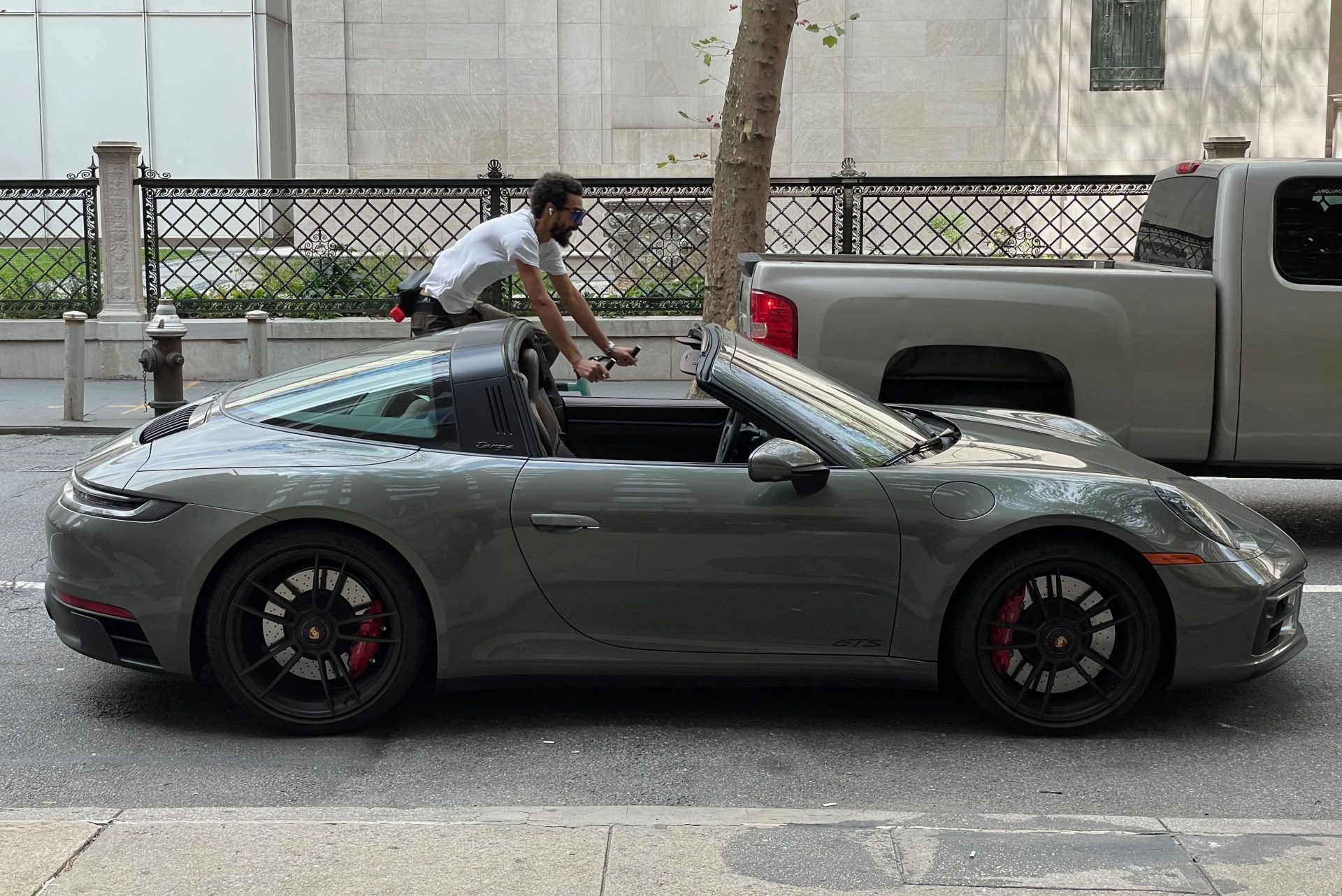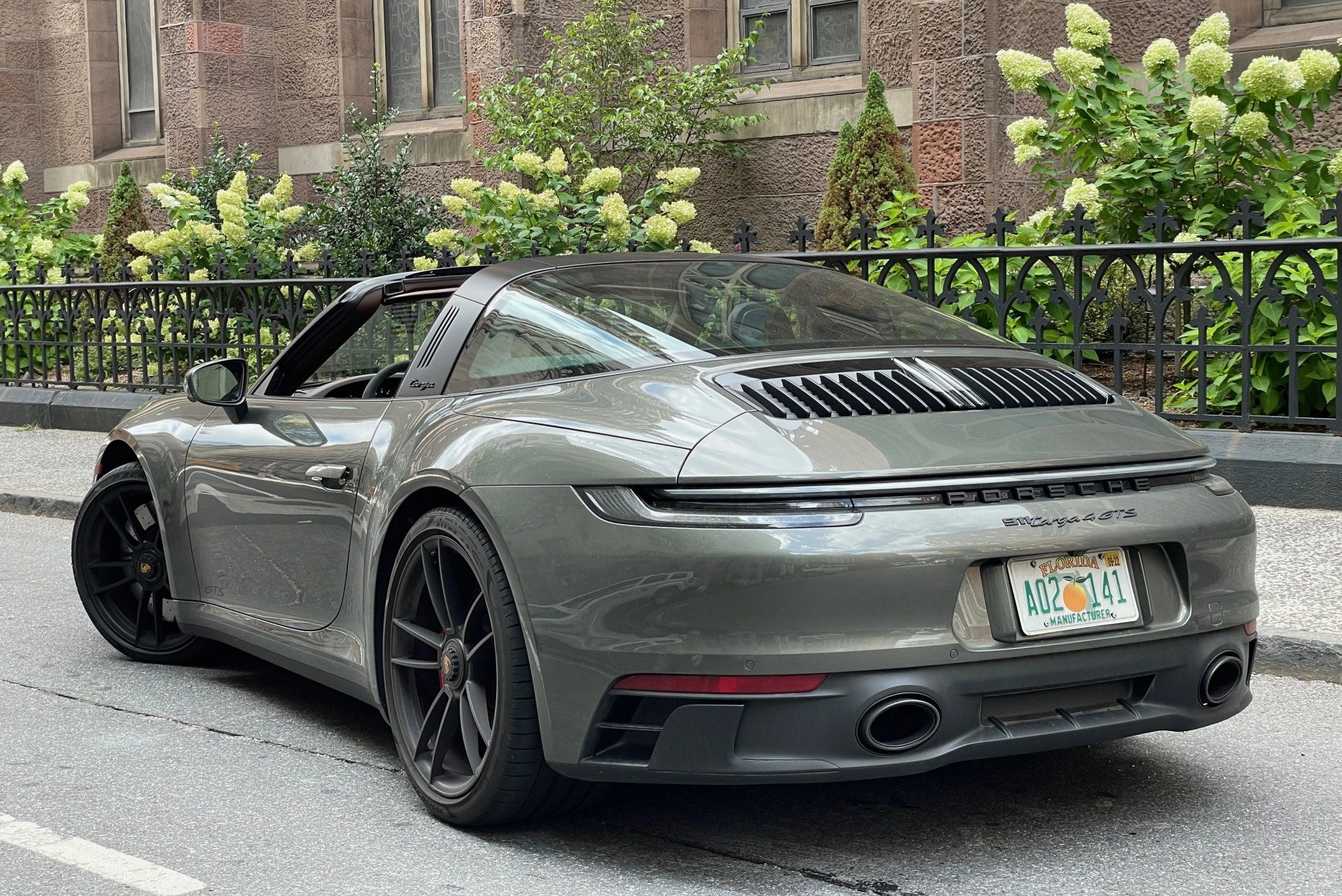When it comes to the term targa, Porsche is the last brand standing in the automotive space. Oh, sure, there are other companies that technically make targa-topped cars; the likes of the Chevy Corvette (both coupe and convertible), the Ferrari F8 Spider and every droptop McLaren all technically qualify as targas, as they boast folding central roof panels and permanently erected structures behind them. But Porsche is the only one in America to keep the name targa alive — fitting, as the carmaker was also the first to use it, way back in 1965.
The term GTS is also specific to Porsche — or at least, it was until Ferrari re-adopted it with the 812 GTS. Where Maranello uses it to signify open-top sports cars, however, Zuffenhausen uses it to specify cars with a Goldilocks blend of performance and usability — more potent and pleasurable than the regular models, more affordable than the big-bore Turbo and GT trims.
For the current 911, the GTS spec goes a little farther than before, bring added power over the S models it’s based on, a specific sportier tuning for the active suspension, the beefier brakes from the 911 Turbo — and, of course, a host of smaller tweaks, such as darkened trim. It’s also possible to opt for it with a seven-speed manual or the standard eight-speed dual-clutch automatic, a choice that will surely keep many buyers up nights trying to choose.
In the form of the 911 Targa 4 GTS with the manual, the 911 seemingly aims to cover as many bases as possible: brutally fast yet very livable, coupe but also droptop, old-school interaction mixed with 2022 tech. To find out how they all mix together, I took the GTS for a spin from the urban jungle of New York to the green forests of Vermont.
What’s Good About the Porsche 911 Targa 4 GTS?
 Will Sabel Courtney
Will Sabel CourtneyThe Targa is better than the cabriolet, and may be the best 911 body style overall
 Will Sabel Courtney
Will Sabel CourtneyI’ve spoken before about my appreciation for the 911 Targa, but to restate it for the record, it’s vastly superior to the 911 Cabriolet, at least in my book. Porsche designers have managed to keep more of the coupe’s inimitable style with every passing generation of droptop, but there’s still no denying that the 911 is at its least visually appealing when shorn of a roof. That’s a compromise many are willing to make in order to bask in both the fresh air and the envious stares of others — but it’s also an unnecessary one, given that the Targa delivers much of the same experience while maintaining the iconic silhouette of the 911.
The Targa also, arguably, benefits in the fact that its smaller aperture delivers less speeding air right into your faceholes. Even at highway speeds, with the roof open, the breeze and noise is more moderate than you’d feel in most true convertibles — without diluting the feel of unadulterated sunshine on your face. For me, at least, it’s a win-win.








